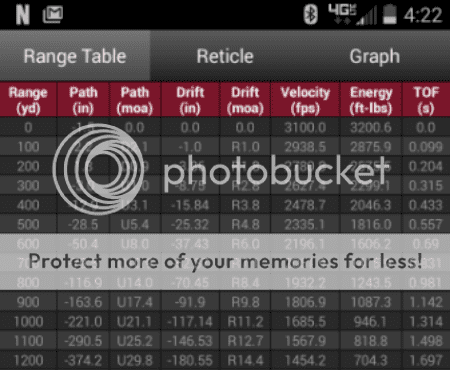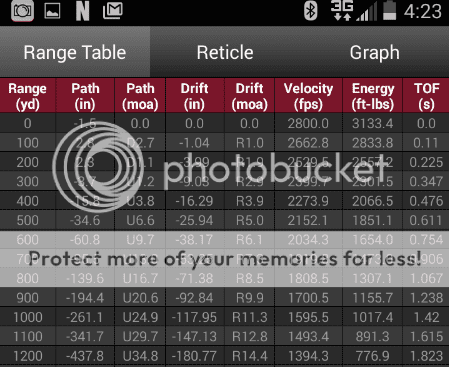I got into a discussion on another topic with some people about exactly how big to go when choosing a bullet.
Here is what I have learned that is based on fact. Two objects traveling at the same velocity but having different mass will have different kinetic energy. So the consensus with many guys is that the bigger the bullet the more KE you are retaining.
I believe this to be true to an extent, but there has to be a point of deminishing return. So how do we find that?
here is an example of data from my 7mm may with 168 and 180 gr VLD's with close to the peak velocity that I can attain in my gun.
The result is that the 180 VLD retains more KE only by single digits but experiences about 3 MOA more drop over 1000 yards.
I am guessing that 168 grains is right around the point where you stop gaining anything by bullet weight?
Has anybody else found similar results?
Here is what I have learned that is based on fact. Two objects traveling at the same velocity but having different mass will have different kinetic energy. So the consensus with many guys is that the bigger the bullet the more KE you are retaining.
I believe this to be true to an extent, but there has to be a point of deminishing return. So how do we find that?
here is an example of data from my 7mm may with 168 and 180 gr VLD's with close to the peak velocity that I can attain in my gun.
The result is that the 180 VLD retains more KE only by single digits but experiences about 3 MOA more drop over 1000 yards.
I am guessing that 168 grains is right around the point where you stop gaining anything by bullet weight?
Has anybody else found similar results?
Attachments
Last edited:





